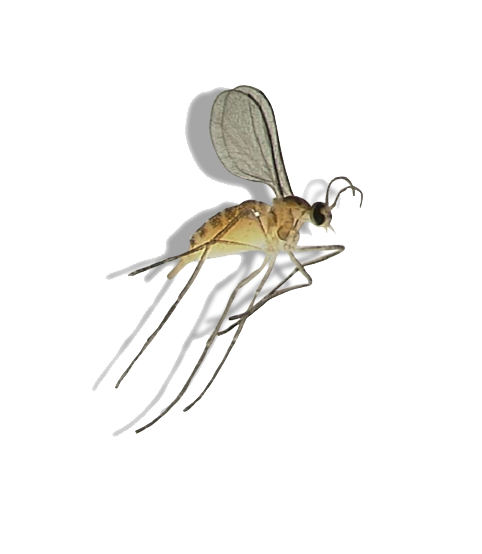


The blueberry gall midge, sometimes known as the tipworm is native to North America and invasive in Asia and Europe. It is a highly specialised pest of Vaccinium crops, such as blueberries and cranberries. The pest targets newly developed buds, stunting growth and reducing crop yield, with severe attacks causing complete crop failure. Hidden within the buds, larvae are difficult to control using pesticides. Generations can reach 5-6 per year. As part of an IPM programme, monitor adults using red Delta Traps with the highly sensitive Dasineura oxycoccana pheromone lures and Optiroll Super Plus (white-midge) for mass trapping.
Adult: a small mosquito-like fly, approximately 2-3 mm long. Females are a touch larger than the males and possess orange abdomens. Males possess yellow abdomens.
Larva: the larvae begin cream to pale-yellow in colour then become orange-red over their development.
They are described as small legless maggots. Newly emerged larvae are approx. ½ mm in length and grow to
approx. 2mm in length when mature
Egg: eggs are approx. ¼ mm long and elliptical in shap
Pupae: the midge overwinters as pupae in soil.
The blueberry gall midge is a particularly important pest in newly planted crops during the first 2-3 years. The females lay their eggs within the growing points of shoots, the larvae then emerge and feed on the growing shoots. The larvae live in leaf galls in the shoot tip triggering leaf distortion and darkening of buds (not to be confused with frost damage), killing the buds. The affected crops cannot produce enough foliage to support a heavy fruit crop, resulting in smaller berries with low sugar. Serious infestation of the blueberry gall midge can result in next years crops being affected due to the crops developing fewer bud-bearing shoots. 100% crop loss has been recorded in some blueberry varieties.